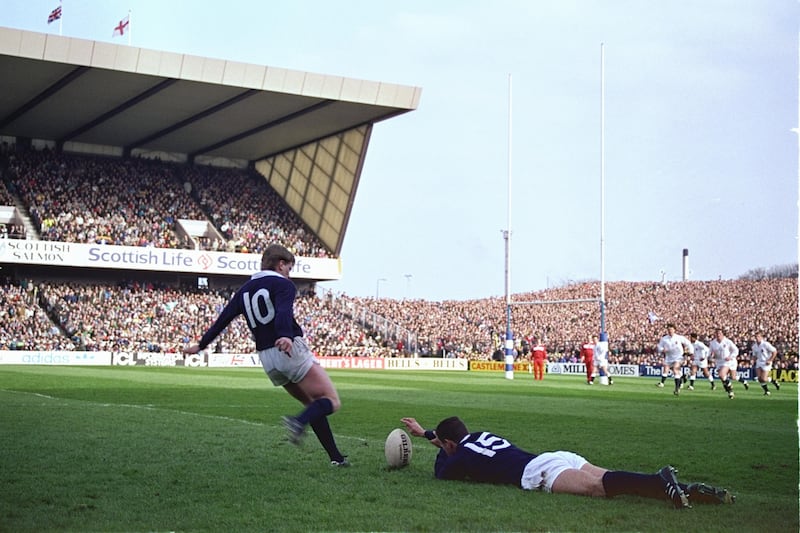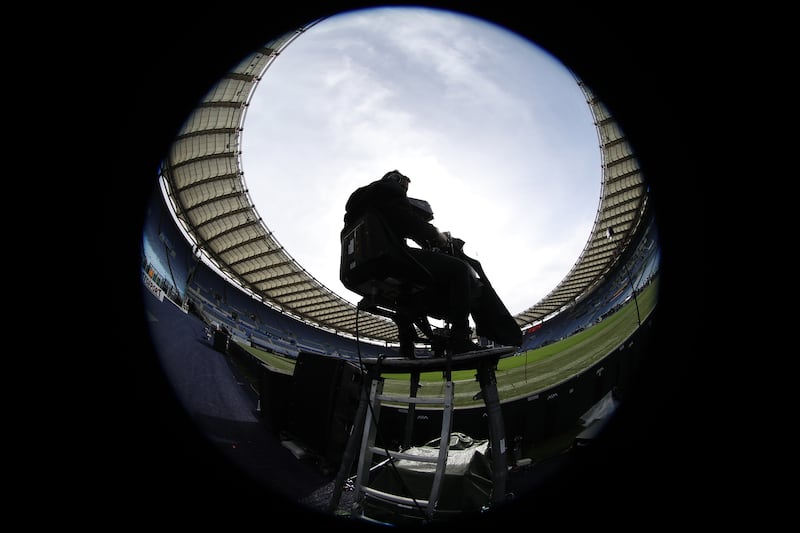A three-part series on the worst decade in the history of Welsh rugby started on BBC last Thursday. Slammed: The Eighties is the sequel to Slammed: The Seventies which covered the most glorious decade in the history of Welsh rugby. Like the great Hollywood franchises, you don’t need to watch the sequels in sequence.
Episode one was captivating, not just for the glorious footage of old matches, but for the machinations of the “big five” – the politburo of selectors who picked the team – and the social history of the time.
The steel workers’ strike of 1980, for example, fed into a violent match between Wales and England at Twickenham, as if the Welsh team were taking a swing for 24,000 inflamed steel workers back home. In those days it was exceptionally rare for a player to be sent off, certainly at Test level, but one of the Welsh flankers lasted only 14 minutes.
Four years later another Wales-England game heaved with political tension after Margaret Thatcher announced plans to close 20 mines in Wales. Rugby and the collieries were the heart and lungs of those mining communities, which made the Welsh rugby team a natural vector for the feelings engendered by the miners’ strike. The players understood that.
Ireland make three changes for Six Nations game against England
McIlroy and Lowry both serious contenders as Masters gets underway
No evidence that 7-1 bench splits increase injury risk, insists World Rugby
In another staggered season, rugby’s URC has lurched along - all the while breaking attendance records
The canvas for all this was the Five Nations, as it was then. It is easy to forget what the landscape of rugby was like before the game turned professional, before there were World Cups, before the European Champions Cup, before it became a weekly, year-round staple of live TV. In the Northern Hemisphere the rugby season revolved around it. For glamour and status and attention, no other rugby competition was in the same galaxy.
It retained that unusual capacity to step outside its realm. The 1990 Grand Slam decider between Scotland and England at Murrayfield was fired up by poisonous resentment towards Thatcher’s poll tax, which had been rolled out in Scotland a year earlier than it had in England and Wales. For that match Flower of Scotland was sung for the first time as Scotland’s pre-match rugby anthem, replacing God Save the Queen. Everyone knew that it was much more than a rugby match.

That was also true when England came to Lansdowne Road in 1973 – at the height of the Troubles, and a year after Wales and Scotland had refused to travel on security grounds. And it was true when England played Ireland at Croke Park in 2007, even if the historical framing had nothing to do with rugby.
By then rugby had a mainstream audience in Ireland on a scale it had never known before, adrenalised by the Heineken Cup. Before professionalism, though, the Five Nations performed that bridging role. For many people it was more or less the only rugby they would watch from one end of the year to the next.
Rugby was far more exclusive, and self-contained, than it is now, and maybe that was more noticeable if you were on the outside looking in. Did rugby care? No. Not then. It was blissfully content in its own company. But if you didn’t come from the game, or didn’t care for its culture, the Five Nations was a neutral space. There are some sports events that fill the town square of national life for a couple of hours and the Five Nations occupied that space.
The games only took place on Saturday afternoons, and because there would be a clash Sports Stadium on RTÉ would show the other game in full once the Ireland game had finished. It was the definition of appointment television before that concept was invented.
It was observed in the first episode of the Wales documentary the other night that no matter how catastrophic their results became in the 1980s, Cardiff Arms Park was always full for Five Nations matches. The same was true for Lansdowne Road in the 1990s, during the worst decade in the history of Irish rugby.
The Irish soccer team, in contrast, has never enjoyed that kind of unblinking loyalty. The crowds at home games have always oscillated around results. In rugby, though, there has always been a Five Nations/Six Nations crowd that turned up year after year, regardless of how good or bad the team was. They came for the rugby, but also for the buzz and the booze and the night before and the night after. It had that magnetism.

As a sports event the Six Nations is a massive beast now. When CVC Capital Partners acquired a one seventh share of Six Nations Rugby in 2021 the business was valued at £2.55 billion (€2.89bn). Since then it is estimated that the value of the business has swelled by nearly €1 billion, driven in large part by hugely lucrative new broadcast deals.
According to Ian Mallon of the Irish Examiner, the Six Nations has global television contracts worth about €800 million now. In the UK alone BBC and ITV signed a €520 million contract to broadcast matches until 2025.
Here audience figures for Six Nations games are enormous now. Ireland’s opening game against France three weeks ago attracted a viewership of 1.06 million on Virgin Media, reflecting a jump of nearly 200,000 on the same fixture two years ago.
Having the best team in our history is clearly lubricating the numbers but it is an established and engaged audience now. Only a fraction of the people watching Ireland’s games on TV ever played rugby or would attend a game in the flesh, but they have become massive TV events.
Being a World Cup year the numbers for 2023 were staggering. Of the top 26 most watched TV programmes in Ireland last year, 15 of them were rugby games; five of them didn’t even involve Ireland. Nearly 1.4 million people tuned in for Ireland’s quarter-final against New Zealand, by far the biggest audience ever for an Ireland rugby game.
Does the Six Nations always deliver? Did the Five Nations? Not by a long chalk. The last round of games was a dud, and every year there are infuriating matches and much hand-wringing about the spectacle.
The late Fred Cogley, the cherished voice of rugby on RTÉ for decades, had an exotic word to describe those kind of matches: “staccato.” We didn’t know what the word meant, but we knew it wasn’t a compliment.
We were still glued to it, though. It had that hold.


















